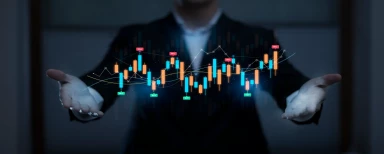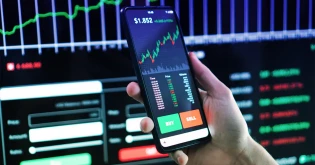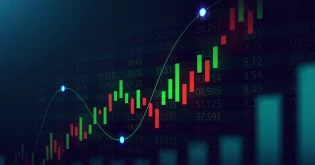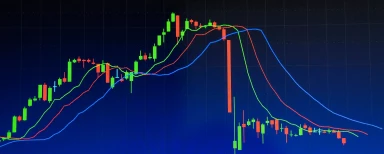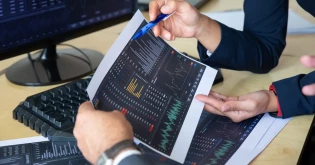-
In such a dynamic environment in the forex trading industry, a good strategy is what differentiates good traders from the rest. Market trends, volatility rates, and economic changes in the world in 2025 require more clever solutions. Traders nowadays must change and improve their practices to remain competitive.
Being a new trader or an expert, it is important to figure out what the forex trading strategies are and how they may be used in practice to guarantee you will have the same results over time. Another way to trade confidently and precisely is to consider the 7 best forex trading strategies in 2025 that can be used to trade with.
1. Scalping Strategy – Quick Trades, Quick Profits
Scalping belongs to the category of the most popular forex trading strategies, which is scalping techniques, and is most appropriate when traders want quick decision-making and high returns. Scalping is based on the concept of small but regular profits, selling in and out of trades in minutes. Examples of such traders include directional traders who buy and sell specific currency pairs that are highly liquid and use sophisticated technical indicators such as the Moving Average or the RSI to give them real-time signals.
The three keys to winning with scalping in 2025 include having a low-latency trading system, narrow spreads, and the ability to buy with the heart and sell with the gut without a second thought.
2. Price Action Trading – Reading the Market Itself
Price action forex trading techniques simply involve the analysis of prices without the use of indicators to a large extent. It has to do with knowing how the market responds to news, support, resistance, and candlestick patterns.
This is a very effective strategy in unstable markets, where the changes in prices are more visible. Traders are learning the major price zones and seeking indications like pin bars, engulfing candles, or breakouts.
Price action trading gives traders the freedom and transparency - qualities crucial in the volatile forex market of 2025.
3. Swing Trading – Catching the Market Waves
Swing trading is great for traders who want a more balanced approach to trading. It involves holding trades for a few days to a few weeks to capture intermediate-term price movements.
This method will be a combination of technical analysis and fundamental analysis. Swing traders will use trendlines, Fibonacci retracement levels, and chart patterns to help them determine entry and exit opportunities.
One of the benefits of swing trading is that it is not screen-time intensive, making it easier for part-time traders with limited time to create and amend trades that can potentially ride a market trend.
4. Day Trading – Precision in Daily Moves
The daily forex trading plans are based on the opportunity identification on a specific trading day. The traders examine intraday charts (such as 15-minute or 1-hour timeframes) to identify profitable setups.
Day traders will seek volatility during prime market hours such as London and New York. The role of risk management is important in this case — the establishment of tight stop-loss and take-profit limits would help to avoid massive losses.
With the markets of the future (2025) turning more into data-driven tools, the use of the economic calendar, sentiment-based data, and real-time analytics can increase the efficiency of day-to-day trading.
5. Breakout Trading – Profiting from Market Momentum
Breakout trading consists of determining major areas of market concentration and trading when the price breaks in the upward or downward direction.
In this case, as an illustration, the EUR/USD currency pair was stuck in a tight trading range, and then you received an economic news release, which made the pair break to the upside. The action can provide a fast trade for the traders.
This is a strategy that can be used in high volatility conditions and would normally be used together with volume analysis to affirm the solidity of the breakout.
Patience is the most important key to success, however. The trick is to wait and have prices actually break out rather than make the assumption that they have broken out.
6. Trend Following – Riding the Market Direction
Trend is your friend is one of the oldest trading adages. The purpose of trend-following strategies is to ride the market through the trend in an effort to make profits.
Traders employ such tools as Moving Averages, MACD, and ADX to identify the strength of the trends. The identification of a trend is followed by traders positioning themselves in line with the direction selling when the trend is down and buying when it is up.
Trend-following will be a reliable and user-friendly strategy in 2025 when AI-generated trading information and better analytical software are employed.
7. Position Trading – Trading-The Long-Term Vision
Position trading is suited to the patient trader who has a perspective on market movements over time, not short-term price movements. Position traders generally hold trades for weeks and even months, like a stock investor, depending on an economic outlook or analysis based on fundamentals, such as changes in interest rates, commercial bank streams, political meeting announcements, etc.
Even though position trading occurs in a slower fashion, this is an effective method to take advantage of overall trends that are occurring in the market without the stress of being monitored constantly.
Tips for Choosing the Right Forex Trading Strategy in 2025
- Know your trading style: Do you prefer to be patient or do you make quick decisions?
- Assess your risk appetite: Select tactics that are in line with your level of comfort.
- Know what's going on: Keep an eye on worldwide economic trends and market indicators
- Open a demo account: Try out strategies in a virtual setting before going live.
- Follow your plan: Stay away from emotional choices and keep being disciplined..
Final Verdict
The Forex market has a lot of potential in the year 2025. With this knowledge and careful practice of these effective trading methods the careful pace of scalping to the neatly charted analysis of the price action, forex trading plans- you would be able to create a lasting trading plan. Do not forget that the secret of long-term success is discipline, lifetime learning, and adaptation to the situations in the market. Are you willing to implement an effective strategy?
Contact our professionals now to find out how our platform and resources can help you in your trading process.
Frequently Asked Questions (FAQs)
Q1: What are forex trading strategies?
A complete plan for when to buy or sell a currency pair is defined by the rules, including entry, exit, and risk management rules.
Q2: Are forex trading strategies scalping, suitable for beginners?
Not at all, scalping demands advanced skills, high concentration, fast execution, and low transaction costs, thus making it very difficult for novices.
Q3: What is the main benefit of daily forex trading strategies?
They enable traders to not only spend less time monitoring charts but also lower emotional stress and eliminate short-term market noise.
Q4: How does price action trading differ from indicator-based trading?
Price action centers on only the raw price movements and chart patterns, while indicator-based trading is grounded on the mathematical formulas that are derived from price data.
Q5: What is the ideal timeframe for swing trading?
Swing traders operate mainly with the 4-hour (H4) and daily (D1) charts to pinpoint and ride the momentum changes over a few days or weeks.
Q6: Why is risk management so important for any strategy?
Risk management is necessary to secure your trading capital and to make sure that no single losing trade can completely drain your account.























